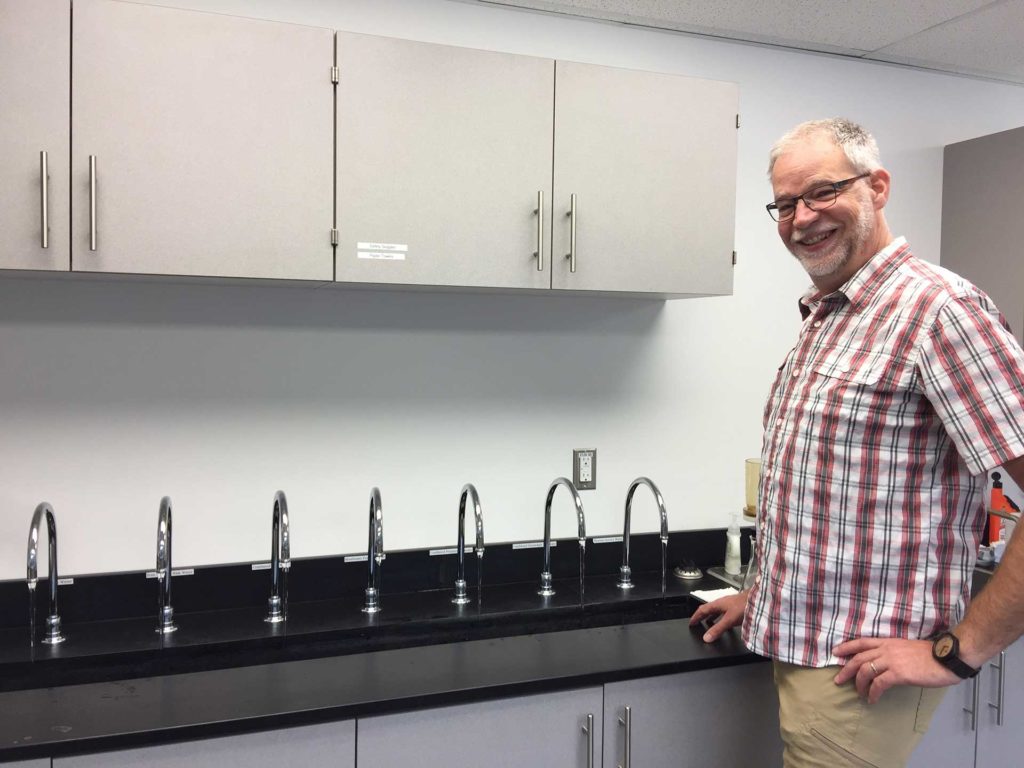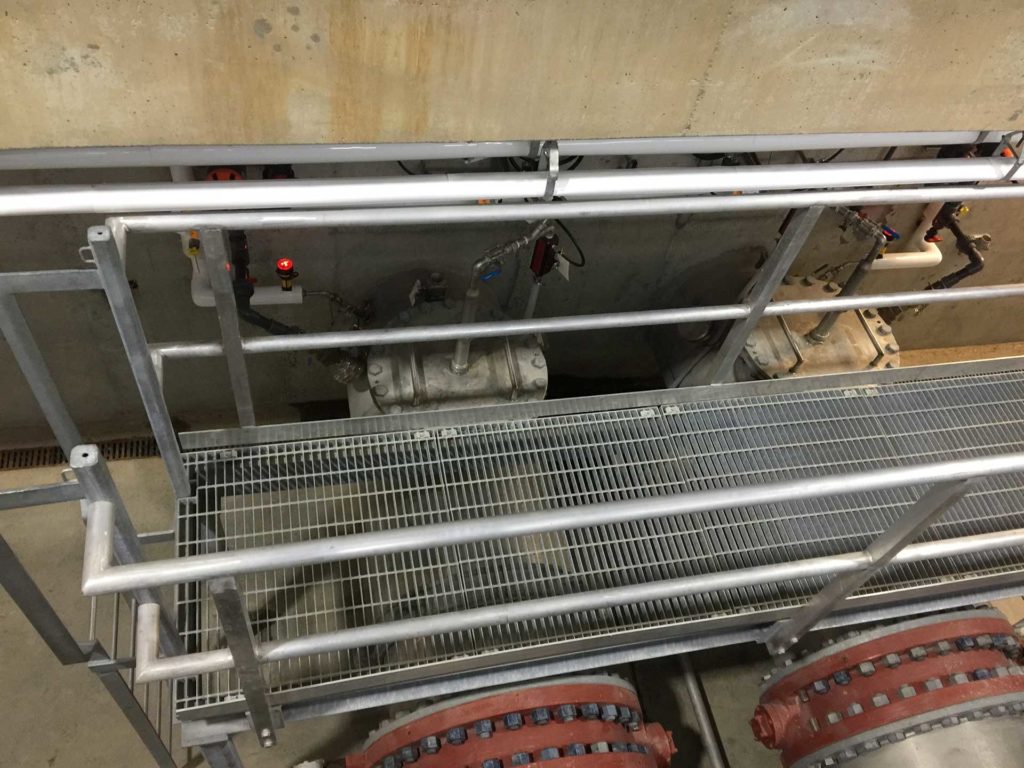At the turn of a tap, we receive one of the world’s most precious resources. Water is essential to our health and vital to our
growing community. We can, however, take it for granted and barely give it a thought until we are threatened with the possibility of drought or water quality problems. Fortunately, the new South Fork Water Treatment Plant takes care of the quality, and residents’ conservation efforts have built a good defence against drought.
The Journey!
From high in the Beaufort Mountain range of central Vancouver Island to the faucet, the City of Nanaimo’s water system is a complex, sophisticated operation. Great care in delivering our most precious resource – the journey begins with rainfall and snowmelt that flows through streams and rivers in the forested watershed of the South Fork of the Nanaimo River. The protected watershed covers an area of over 200 square kilometres – two and a half times the size of the City itself! The City captures winter precipitation in Jump Lake and holds it for release during the summer period when water demand is highest. It is released downstream to the venerable South Fork Dam where water is bypassed to the Nanaimo River to ensure fish habitat and recreation is preserved. The water destined for the taps flows by twin pipelines, using no energy but gravity, to the Water Treatment Plant. All water flowing to Nanaimo passes through the filters in this state-of-the-art facility. The Water Treatment Plant filters particles down to one ten-millionth of a metre producing water delivered to residents that is clear, fresh, and very safe to drink.
From the Water Treatment Plant, water is carried through pipelines to reservoirs around the City. This is accomplished mostly by gravity and a few small pump stations to the higher areas. This puts critical volumes of water close to where the demands are and provides storage for firefighting. From the reservoirs, drinking water is delivered through more than 600 kilometres of pipe networks. Water is tested hundreds of times per year to ensure that the water received from the environment and the water delivered to residents
consistently exceeds world class standards. The system is planned, designed, built, and operated to meet the community’s needs now and well into the future. The Water Treatment Plant has sufficient capacity to handle up to 117 million litres per day – enough for more than 150,000 people.
Why a new facility?
Construction started on the City of Nanaimo’s South Fork Water Treatment Plant in May 2013, and the plant began operation in December 2015. The impetus for the design and development of a new facility was due to new regulations whereby the Vancouver Island Health Authority adjusted the City’s Operating Permit to require filtration (also known as 4-3-2-1 Treatment Policy):
- 4-log (99.99%) removal of viruses that may be in the water
- 3-log (99.9%) removal of pathogenic organisms (cryptosporidium and giardia lamblia) that may be in the water
- 2 forms of treatment: filtration and disinfection by chlorine
- 1 NTU maximum turbidity in finished water
This new facility is innovative and effective:
- Membrane filters remove particles down to 0.1 micron – one ten-millionth of a metre, smaller than most bacteria
- Two stages of filtration recover more than 99% of the water that passes through the plant – very highly efficient
- Largest plant in Canada siphoning water through the membranes by gravity, saving in excess of $60,000 per year in power costs
- The plant has capacity to filter up to 117 Million Litres per day – enough for 150,000 people.
- Currently providing between 30 million (winter) and 60 million (summer) litres per day to 91,000 citizens
- Almost all the waste from the treatment process is handled on site – the liquid waste is discharged to the engineered wetlands, and the solid waste (sludge) is used as a topsoil amendment by a local company
- The structure can accommodate future growth. Building materials are designed with 75-year life span
Costs and funding sources:
Overall project budget:
- $72.5 Million (including design ($10M), pipeline installation ($9 M), construction ($51M), contingency)
Funding sources:
- Grants from Canada: $26 M (Community Works, Building Canada Funds)
- Grants from British Columbia: $10 M (BC-Building Canada, Strategic Priorities Funds)
- Development Cost Charges and User rates: $14 M
- Borrowing: 22.5 M
Some interesting facts:
- Nanaimo has had household meters since the 1970s and full-cost accounting since the early 1990’s
- The population of Nanaimo has grown but total daily flows have remained at early 1990’s levels, due to an excellent water conservation publicity campaign
- Nanaimo is growing at a rate of approximately1.5% per year, and while the plant currently serves a population of 92,000, it is designed for expansion to serve a population of up to 140,000
- The water treatment system relies on gravity flow – from watershed to treatment plant to population served – thus reducing energy costs and increasing lifespan of the membrane filters
- Water from membrane cleaning and residuals processing goes to a wetland system with supports a diverse ecosystem including amphibians and birds
- Solids from the residuals process are used as a soil enhancer and are blended with soil at a nearby facility
- Thanks to the filtration plant, the City of Nanaimo avoided 70 days of boil water notices in 2016 alone.
- Many of the trades that worked on the project were local; the site varied between 20 and 90 workers at any given time.
- Nanaimo’s water consumption rates are among the lowest in Canada: residential use is less than 225 litres per person per day
- The plant uses chlorine in very small doses (less than 1.0 mg/L) to keep the water disinfected. Chlorine use is down over 40% since the filtering
- The project won an Award of Merit at the 2017 Association of Consulting Engineering Companies of BC!
- Permanent staff of five highly qualified and EOCP certified Water Treatment Plant Operators
- The twin panels by Snuneymuxw artist James Johnny depict the Raven and Salmon, which are abundant in the neighbourhood of the plant, along with the Man Within, representing the Snuneymuxw people, upon whose traditional territory the plant sits.
Questions?
- Bill Sims, AScT, PTech Sims@nanaimo.ca 250-756-5302


